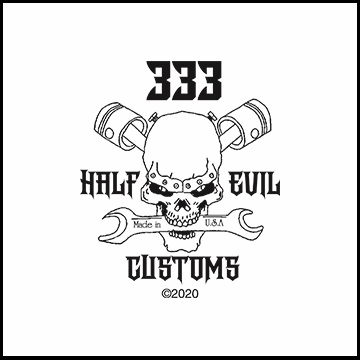Hi, I'm new to the group. I just got my second nonworking KZ250 (one's an 80 and one's an 81) and I'm about to start trying to make one runner out of the two.
I found the following list in the archives, and I confess I'm wholly ignorant of how to perform a compression test. Do you have a tutorial for a "new" bike overhaul to get it running, including how to do a compression test? (when I say "wholly ignorant" that's what I mean -- I know nothing!)
Thanks,
Chris in Kansas City
List from archive:
Re:starting a restoration -2005/12/06 09:56 Here is a generic rebuild procedure (good for any KZ). Search this forum for more detail on each specific item.
1) Check valve clearance and adjust if necessary. Do this first as it could affect your compression. While you have the valve cover off, may want to inspect cam chain and cam chain timing.
2) Once valve clearance is in spec, check engine compression. If compression is bad you have a different set of issues and may want to reconsider if you really want to restore the bike or not. The rest of this procedure assumes that your compression is good.
3) If the starter will not turn the engine over then troubleshoot electrical system. Charge battery and/or replace if it will not hold charge.
4) Check out the ignition system. First make sure you have good strong spark on all cylinders. Maybe do wiredgeorge's relay coil feed mod. Replace spark plugs. After getting good spark check ignition timing.
5) If fuel tank is rusty inside, remove and clean it.
6) Check fuel petcock operation. Repair/replace if necessary.
7) Install (or replace) fuel filter. Do this after cleaning the fuel tank and before cleaning the carburator.
8) Remove carburator, dissamble, clean, replace internal o-rings, reassemble & re-install. When cleaning make sure all jets and passages are clear by blowing air through. Replace carb boots if they are hard or cracked.
9) Check fuel level in carb bowls. Adjust if necessary.
10) Check condition of all vacuum lines and caps. Replace any that are hard and/or cracked. (Engine will NOT run well with a vacuum leak!)
11) Start engine! Adjust idle mixture screws and idle speed screw to obtain smooth idle.
12) Sync carbs.
13) Now the engine should be running pretty well. At this point I would change all fluids (engine oil, brake fluid, fork oil) as well as oil filter and air filter. Also a good idea to lube the clutch and throttle cables. You could change fluids as the first step but I recommend waiting until you see if you can get the engine running or not...no sense replacing fluids only to find out the engine is locked up.
14) Now you can start on the chassis. Personally I would just get on & ride for a month or two before beginning any chassis work. Exception would be tires & brakes...make sure tires are good (10 yr old tires need replaced even if tread is good!) and that brakes work well before your first ride. While riding you will likely find that some problems will fix themselves while others will develop.
15) Eventually consider repairing the following chassis items: Replace front fork seals (only needed if they leak assuming you changed the oil in step 13), replace brake pads, adjust clutch, replace rear shocks, repack wheel bearings.
16) After all the above then you can begin polishing, painting, upgrading, etc.



